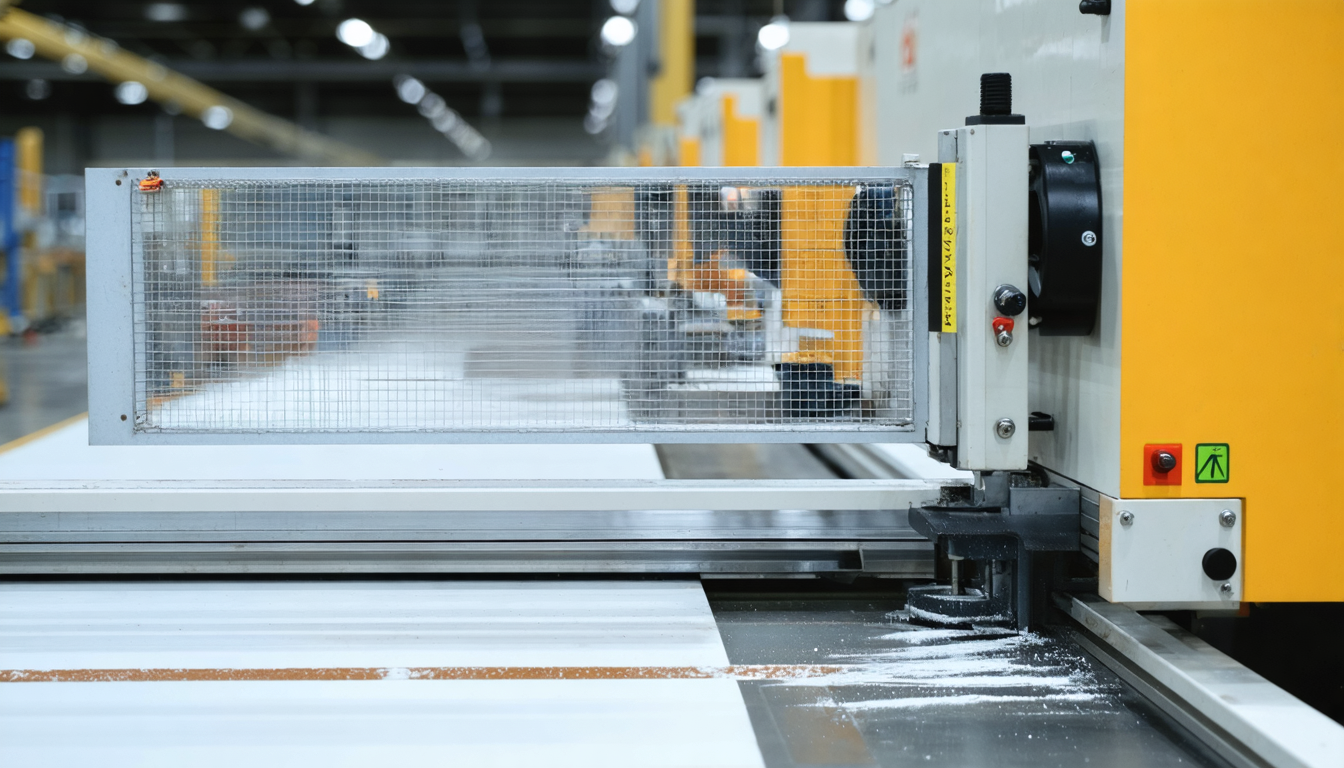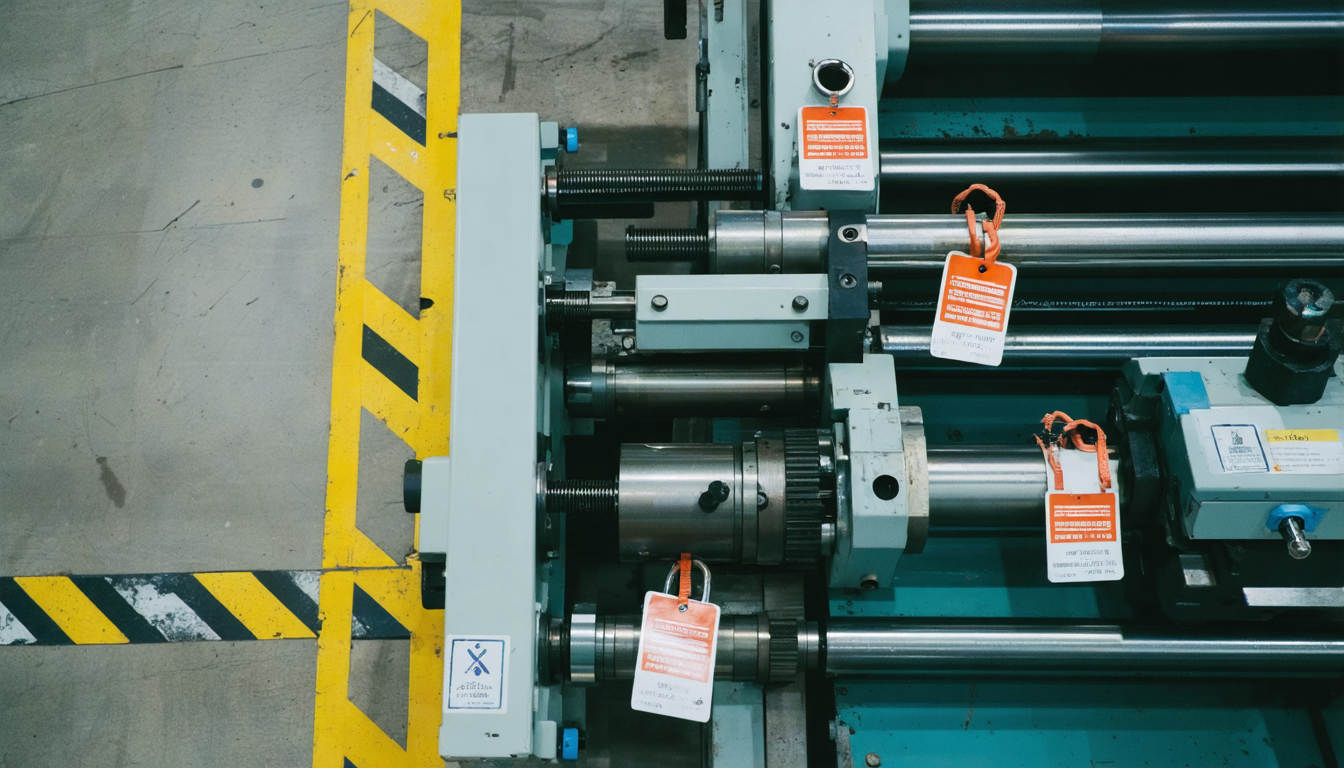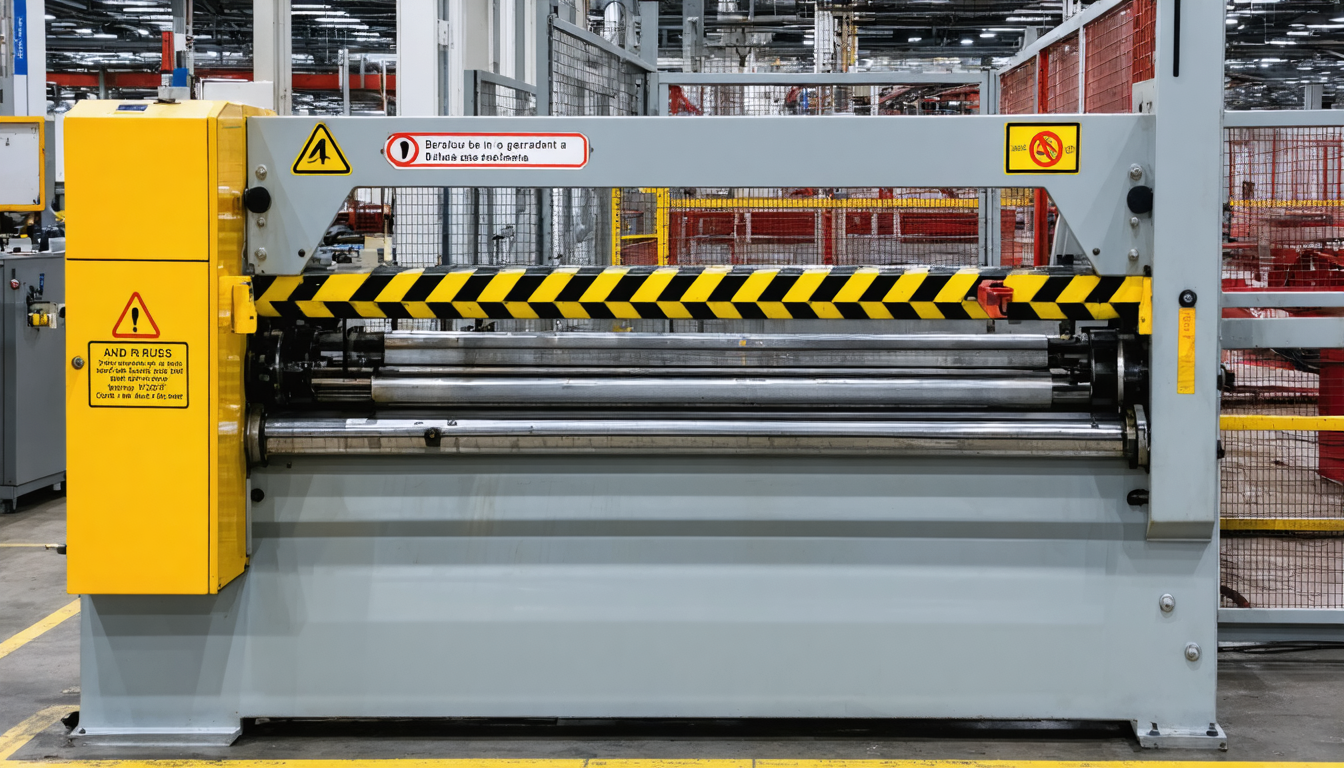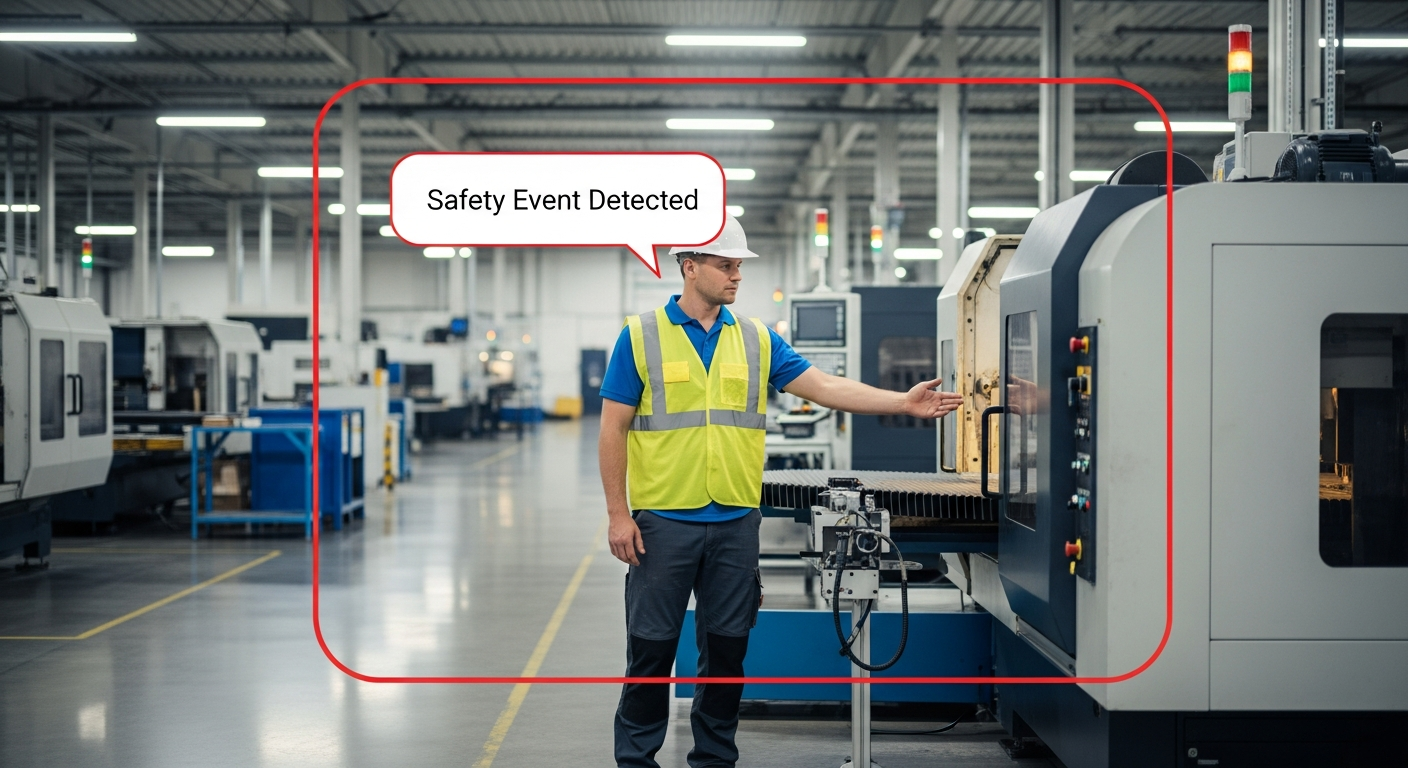Machine-related amputations are a serious and costly hurdle in the U.S. manufacturing sector. These severe injuries result in considerable financial losses for manufacturers, encompassing both direct and indirect costs that impact the bottom line.
Fortunately, most of these injuries are avoidable. By combining reliable safety protocols, a culture of accountability, and video AI technology like video analytics, manufacturing leaders can move from reacting to incidents to addressing risks before they escalate. This guide breaks down the true costs, root causes, and offers a clear framework for moving from a reactive to a forward-looking safety model.
Why machine-related amputations are a costly obstacle for the manufacturing industry
Machine-related amputations carry an outsized impact for manufacturers—far beyond the initial injury. They are a leading source of recordable OSHA violations and frequently lead to substantial direct costs (medical care, workers’ compensation) and indirect costs (lost productivity, regulatory penalties, and reputational damage).
The top 5 causes of machine-related amputations in manufacturing—and anticipatory mitigation
Understanding the root causes is the first step to mitigating machine-related amputations. Here are the five leading hazards, with practical mitigation tips and a look at how video AI can strengthen your safety program.
1. Inadequate Machine Guarding

The Hazard:
An operator at a wood products plant is tasked with feeding boards through a stationary saw. The guard has been moved aside for a quick adjustment and not replaced. As the operator reaches in, his fingers slip and contact the blade.
Traditional Mitigation:
Physical barrier guards and interlocks installed and routinely inspected.
Regular audits and safety walkthroughs to spot missing or tampered guards.
Training all staff to recognize, report, and correct guarding issues.
How AI Enhances Mitigation:
Video AI can be configured to monitor danger zones around machinery. By setting up alerts for when a person enters these restricted areas, supervisors can be notified in real-time of potential exposure to hazards, such as when a guard is missing or a worker gets too close to moving parts.
2. Failure to Lock Out/Tag Out (LOTO)

The Hazard:
A maintenance technician climbs onto a rotary die cutter to clear a jam, skipping the LOTO process to save time. The machine unexpectedly cycles while he’s cleaning, pulling his hand between rollers.
Traditional Mitigation:
Written LOTO procedures posted at each machine.
Annual refresher training and audits.
Supervisor sign-off before any maintenance or cleaning.
How AI Enhances Mitigation:
Video AI systems can detect when workers are present in restricted areas near machinery, alerting supervisors to potential LOTO violations as they happen. Reviewing video-flagged incidents helps teams tighten procedures and reinforce accountability.
3. Operating Unguarded or Outdated Equipment
The Hazard:
A seasoned operator at a metal stamping facility waves off concerns about a missing light curtain on a decades-old press brake. During a rush shift, his hand enters the point of operation just as the press cycles.
Traditional Mitigation:
Scheduled equipment upgrades and retrofits with modern safety devices (light curtains, two-hand controls).
Proactive maintenance logs and supervisor sign-off before operation.
Removal of obsolete equipment from service.
How AI Enhances Mitigation:
Video AI can flag when people access areas around machinery where safety features (like light curtains) should be active, creating visual records for safety audits. Incident investigation tools significantly reduce the time needed to review video and pinpoint unsafe behaviors or the use of specific equipment.
4. Rushed Work and Unsafe Shortcuts

The Hazard:
To meet a tight deadline, a line lead disables a guard on a bending machine for “just a minute” to clear a jam. A junior operator, unaware of the change, resumes cycling the machine and loses the tip of his finger.
Traditional Mitigation:
Production schedules that accommodate safe work practices.
“Stop work” authority for all employees.
Incident reporting for shortcuts.
How AI Enhances Mitigation:
AI can spot patterns of running, crowding, or repeated entries into restricted areas—signals that workers may be taking unsafe shortcuts under pressure. Real-time alerts enable supervisors to intervene to address unsafe behavior.
5. Insufficient Training and Communication
The Hazard:
A temporary worker, new to the job, attempts to clear a jam from a food processing machine. Unaware of the proper shut-down procedure, she reaches into the moving parts and suffers a fingertip amputation.
Traditional Mitigation:
Mandatory onboarding and annual retraining for all machine operators.
Multilingual signage and safety manuals.
Peer mentoring and buddy systems for new hires.
How AI Enhances Mitigation:
Video analytics enable safety teams to review training effectiveness by identifying repeated unsafe behaviors, such as improper machine access or missing PPE. This information helps tailor training content, target refresher sessions, and monitor PPE compliance across shifts.
Integrating a video AI system: From NVR to operational insights in manufacturing
Upgrading your safety tech doesn’t mean starting from scratch. Today’s AI camera platforms are designed to connect directly to your existing infrastructure—including standard POE cameras—so you can skip the expensive “rip-and-replace.” Instead, these systems add a smart analysis layer on top of your current video feeds, evolving passive monitoring into an active safety engine.
Feature | Traditional NVR System | Video AI Platform |
|---|---|---|
Camera Compatibility | Requires new/specific models | Works with existing POE/legacy cams |
Storage | On-premise hardware | Secure, cloud-native, scalable |
Maintenance | Frequent, on-site | Minimal, remote updates |
User Access | Limited seats | Unlimited users, unified dashboard |
Video Review | Manual, slow | AI-powered search & rapid review |
Actionable Insights | Passive footage | Real-time alerts: PPE, no-go zones |
A cloud-based video AI system bridges legacy cameras to a secure, cloud-native dashboard. This automates incident detection, can significantly reduce investigation time, and empowers unlimited staff to monitor and act on safety issues—all from a single, unified dashboard.
Unlike standard NVRs, the AI analysis layer surfaces specific, useful data—flagging missing PPE, and unsafe machine access—so your team can respond preemptively, not just after an incident.
Tips for manufacturing teams evaluating video AI upgrades:
Prioritize solutions that integrate seamlessly with existing safety policies and machine guarding requirements (Source: OSHA 29 CFR 1910.212).
Ensure camera compatibility—look for platforms that work with both modern and legacy feeds.
Choose systems that offer real-time data and unlimited user access, supporting collaborative safety efforts.
Align technology upgrades with your broader safety goals—integrate with incident reporting, training, and regular safety audits.
Transform manufacturing safety—book a safety consultation
Every machine-related amputation is a call to raise the bar—not just to react. By combining video AI with proven safety protocols, you can significantly reduce risk, speed up investigations, and build a culture where every team member feels empowered to work safely.
Want to see how video AI can help your team reduce risk and improve safety? Request a Spot AI demo to experience the platform in action and explore its capabilities for your facility.
Frequently asked questions
What are the main causes of machine-related amputations in manufacturing?
The primary causes are inadequate machine guarding, failure to follow lockout/tagout (LOTO) procedures, use of outdated or unguarded equipment, rushed work or unsafe shortcuts, and insufficient training—especially for temporary or non-English-speaking workers.
How can manufacturers implement safety technology without major disruption?
Video AI platforms are designed to overlay analytics on your existing camera feeds, avoiding the need for costly hardware replacements. They automate hazard detection and reporting, seamlessly supporting your team’s daily operations and safety routines.
What are the key compliance requirements for machine safety in manufacturing?
OSHA 29 CFR 1910.212 mandates machine guarding for all moving parts, while strict LOTO protocols must be enforced for maintenance or cleaning. OSHA’s National Emphasis Program (NEP) for amputations targets industries with high risk, so regular audits and training are essential.
What should manufacturers consider before adopting AI camera technology?
Start with a risk assessment—map out hazardous machinery and high-traffic areas. Involve safety, operations, and IT teams early to ensure smooth integration. Pilot the system in a problem area, review results, and expand based on data-driven improvements.
How can safety technology help reduce stress for safety professionals?
AI-driven analytics automate the detection of hazards, freeing safety professionals from endless manual monitoring and paperwork. This allows them to focus on proactive planning, team support, and continuous improvement—instead of always reacting to the last incident.
What is AI video analytics for factory operations?
AI video analytics is technology that uses artificial intelligence to automatically analyze video from your facility’s cameras. It detects and flags specific events, like a person entering a restricted area or missing PPE, turning passive video into actionable data. This allows your team to address risks and operational issues without requiring constant manual monitoring.
What is the best video analytics for workplace safety?
The best system is effective, scalable, and easy for your team to use. Look for a platform that integrates with your existing cameras to avoid costly replacement and provides specific, real-time alerts for hazards like no-go zone entries. It should also offer unlimited user access from a unified dashboard to empower collaboration and use a secure, cloud-native architecture for reliability.
About the author
Joshua Foster
IT Systems Engineer, Spot AI
Joshua Foster is an IT Systems Engineer at Spot AI, where he focuses on designing and securing scalable enterprise networks, managing cloud-integrated infrastructure, and automating system workflows to enhance operational efficiency. He is passionate about cross-functional collaboration and takes pride in delivering robust technical solutions that empower both the Spot AI team and its customers.

























.png)
.png)
.png)